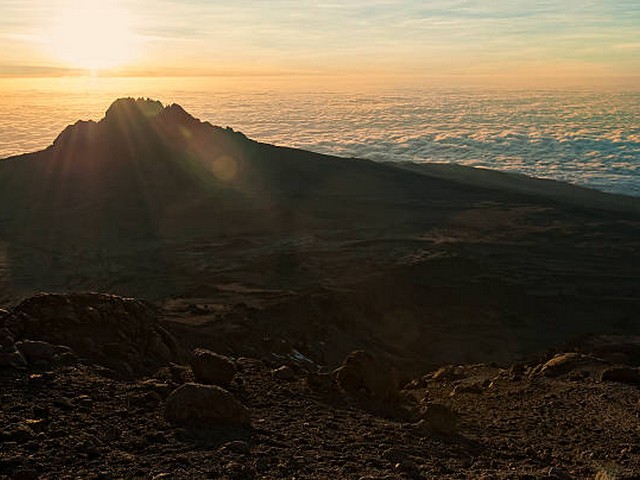Kilimanjaro Photography Best Practices for Sustainability
Ascending the majestic slopes of Mount Kilimanjaro is nothing short of a transformative journey. For many, it’s a pilgrimage of the spirit and an ultimate test of physical endurance. For photographers, it’s a storied canvas, alive with awe-inspiring landscapes, rich biodiversity, and vibrant cultural encounters. At the Kilimanjaro Centre for Trekking and Ecotourism (KCTE), we understand the magnetic pull Kilimanjaro exerts on the heart of every shutterbug. However, capturing its essence requires more than just technical skill; it demands a sustainable approach that respects and preserves its beauty for generations to come.
Why Focus on Sustainable Photography?
Sustainable photography goes beyond taking breathtaking shots. It’s about making conscious choices that contribute positively to the environment and the local communities. On Kilimanjaro, where the delicate balance of ecosystems meets the cultural heritage of the Chagga people and other indigenous groups, every picture taken should be a step towards conservation and respect.
Best Practices for Sustainable Photography on Kilimanjaro
Choose Environmentally Friendly Gear
Invest in camera equipment and accessories that are built to last and, importantly, produced by companies with strong environmental credentials. Durable gear means less waste, and ethical manufacturing practices reduce your ecological footprint even before you set foot on the mountain.
Respect Wildlife and Natural Habitats
Kilimanjaro is teeming with unique flora and fauna. While it’s tempting to get as close as possible for the perfect shot, it’s crucial to use zoom lenses to capture wildlife without disturbing their natural behaviors. Stick to marked trails to avoid trampling over fragile vegetation.
Engage with Local Communities Respectfully
Photography can be a powerful tool for cultural exchange if approached with respect. Always ask for permission before taking photos of local people. This not only shows respect but also opens the door to deeper interaction and understanding, enriching your photography experience.
Leave No Trace
This principle is simple: take only pictures, leave only footprints. Pack out all your trash, including used batteries and old camera accessories. When changing lenses or handling your equipment, be mindful not to accidentally drop small pieces in the wild.
Share Stories Responsibly
When you share your photographs, whether in galleries, online platforms, or social media, make sure your narratives are respectful, factual, and promote conservation. The stories behind photographs can be as powerful as the images themselves.
The Role of Technology in Sustainable Photography
Technology, when used wisely, can enhance sustainable practices in photography. Solar chargers, eco-friendly batteries, and digital storage options all minimize the environmental impact of your photographic journey. Apps and tools that help track and minimize your carbon footprint can also be invaluable.
Join a Sustainable Tour with KCTE
At KCTE, we are committed to sustainable tourism. Our guided tours not only offer you the expertise of seasoned mountaineers but also ensure that your trek is aligned with conservation principles. Booking your Kilimanjaro climb with us means choosing a partner who cares deeply about the mountain and its future.
Why Choose KCTE?
- Expert Guidance: Our guides are trained in sustainable practices and will help you capture incredible shots without harming the environment.
- Local Knowledge: We provide insights into the local culture and traditions, enriching your photographic narrative.
- Conservation Efforts: A portion of our proceeds goes directly into conservation initiatives and community upliftment programs.
FAQs About Photography on Kilimanjaro
Q: What is the best time of year for photography on Kilimanjaro?
A: The best times are during the dry seasons, from late June to October and from late December to early March. These periods offer clearer skies and more predictable weather.
Q: Can I use a drone to take photos on Kilimanjaro?
A: Drone usage is restricted within national parks in Tanzania, including Kilimanjaro. Always check current regulations before planning your photography equipment.
Q: Are there any photography workshops available on Kilimanjaro?
A: Yes, KCTE offers specialized photography tours that include workshops conducted by professional photographers experienced in high-altitude and landscape photography.
Q: How can I ensure that my photography equipment is eco-friendly?
A: Opt for equipment from brands committed to sustainability, use rechargeable batteries, and consider buying used gear to extend the lifecycle of existing products.
Capturing Kilimanjaro’s Soul: An Invitation
We invite you to join us at the Kilimanjaro Centre for Trekking and Ecotourism to experience and capture the towering splendor of Kilimanjaro. Let’s tread lightly and shoot responsibly, ensuring that the stories we tell through our lenses are those of reverence and conservation. Book your climb with KCTE today, and be part of a community that cherishes the world’s beauty while diligently working to preserve it.
Together, with every sustainable click of the shutter, we can help ensure that Kilimanjaro remains a source of wonder and inspiration for all who dream to follow in our photographic footsteps.




